- Clone
- HI111 (See other available formats)
- Regulatory Status
- RUO
- Workshop
- IV N231
- Other Names
- LFA-1α chain, Integrin αL subunit, αL Integrin, ITGAL
- Isotype
- Mouse IgG1, κ
- Ave. Rating
- Submit a Review
- Product Citations
- publications
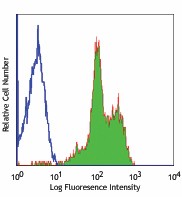
-

Human peripheral blood lymphocytes stained with purified HI111, followed by anti-mouse IgGs FITC
| Cat # | Size | Price | Quantity Check Availability | Save | ||
|---|---|---|---|---|---|---|
| 301202 | 100 µg | 82€ | ||||
CD11a is a 170-180 kD type I transmembrane glycoprotein also known as LFA-1α chain and integrin αL subunit. CD11a non-covalently associates with integrin β2 (CD18) to form LFA-1. It is expressed on all leukocytes, including B and T lymphocytes, monocytes, macrophages, neutrophils, basophils and eosinophils. It is absent on non-hematopoietic tissues and platelets. CD11a plays a central role in leukocyte cell-cell interactions and is important in lymphocyte costimulation. CD11a/CD18 binds to ICAM-1 (CD54), ICAM-2 (CD102), and ICAM-3 (CD50).
Product DetailsProduct Details
- Verified Reactivity
- Human
- Reported Reactivity
- African Green, Baboon, Cow, Capuchin monkey, Chimpanzee, Cynomolgus, Dog, Horse, Rabbit, Sheep
- Antibody Type
- Monoclonal
- Host Species
- Mouse
- Formulation
- Phosphate-buffered solution, pH 7.2, containing 0.09% sodium azide.
- Preparation
- The antibody was purified by affinity chromatography.
- Concentration
- 0.5 mg/ml
- Storage & Handling
- The antibody solution should be stored undiluted between 2°C and 8°C.
- Application
-
FC - Quality tested
IHC-F, WB, Block - Reported in the literature, not verified in house - Recommended Usage
-
Each lot of this antibody is quality control tested by immunofluorescent staining with flow cytometric analysis. For flow cytometric staining, the suggested use of this reagent is ≤ 0.5 µg per 106 cells in 100 µl volume or 100 µl of whole blood. It is recommended that the reagent be titrated for optimal performance for each application.
- Application Notes
-
Clone HI111 epitope maps to the top region of the I domain that is close to the putative ligand-binding site surrounding the MIDAS (metal ion-dependent adhesion site). HI111 is specific for the closed confirmation of the integrin8. Additional reported applications (for the relevant formats) include: immunohistochemical staining of acetone-fixed frozen sections, Western blotting2, and blocking of cell-cell interaction and inhibition the binding of ICAM-14. This clone was tested in-house and does not work on formalin fixed paraffin-embedded (FFPE) tissue. The Ultra-LEAF™ purified antibody (Endotoxin < 0.01 EU/µg, Azide-Free, 0.2 µm filtered) is recommended for functional assays (Cat. No. 301233 & 301234).
-
Application References
(PubMed link indicates BioLegend citation) -
- Knapp W, et al. 1989. Leucocyte Typing IV. Oxford University Press New York.
- Leite F, et al. 2002. Infec. Immun. 70:4336.
- Jiang Y, et al. 2005. Clin. Hemorheol. Microcircul. 32:261.
- BTchard D, et al. 2001. J. Immunol. 167:3099.
- Sithu SD, et al. 2007. J. Biol. Chem. doi:10.1074/jbc.M611273200.
- Choi EY, et al. 2008. Blood 111:3607. PubMed
- Yoshino N, et al. 2000. Exp. Anim. (Tokyo) 49:97. (FC)
- Ma Q, et al. 2002. J. Biol. Chem. 277:10638.
- Product Citations
-
- RRID
-
AB_314140 (BioLegend Cat. No. 301202)
Antigen Details
- Structure
- Integrin, type I transmembrane glycoprotein, noncovalently linked with integrin β2 (CD18) forms LFA-1, 170-180 kD
- Distribution
-
Leukocytes
- Function
- Adhesion, costimulation
- Ligand/Receptor
- ICAM-1(CD54), ICAM-2(CD102), ICAM-3(CD50)
- Cell Type
- Leukocytes, Tregs
- Biology Area
- Cell Adhesion, Cell Biology, Costimulatory Molecules, Immunology, Innate Immunity, Neuroinflammation, Neuroscience
- Molecular Family
- Adhesion Molecules, CD Molecules
- Antigen References
-
1. Lub M, et al. 1995. Immunol. Today 16:479.
2. Parsons J. 1996. Curr. Opin. Cell Biol. 8:146. - Gene ID
- 3683 View all products for this Gene ID
- Specificity (DOES NOT SHOW ON TDS):
- CD11a
- Specificity Alt (DOES NOT SHOW ON TDS):
- CD11a
- App Abbreviation (DOES NOT SHOW ON TDS):
- FC,IHC-F,WB,Block
- UniProt
- View information about CD11a on UniProt.org
Other Formats
View All CD11a Reagents Request Custom Conjugation| Description | Clone | Applications |
|---|---|---|
| APC anti-human CD11a | HI111 | FC |
| Biotin anti-human CD11a | HI111 | FC |
| FITC anti-human CD11a | HI111 | FC |
| PE anti-human CD11a | HI111 | FC |
| PE/Cyanine5 anti-human CD11a | HI111 | FC |
| Purified anti-human CD11a | HI111 | FC,IHC-F,WB,Block |
| Alexa Fluor® 488 anti-human CD11a | HI111 | FC |
| Alexa Fluor® 647 anti-human CD11a | HI111 | FC |
| PE/Cyanine7 anti-human CD11a | HI111 | FC |
| Alexa Fluor® 594 anti-human CD11a | HI111 | ICC,FC |
| Purified anti-human CD11a (Maxpar® Ready) | HI111 | FC,CyTOF® |
| APC/Fire™ 750 anti-human CD11a | HI111 | FC |
| Alexa Fluor® 700 anti-human CD11a | HI111 | FC |
| PerCP/Cyanine5.5 anti-human CD11a | HI111 | FC |
| PE/Dazzle™ 594 anti-human CD11a | HI111 | FC |
| Ultra-LEAF™ Purified anti-human CD11a | HI111 | FC,IHC-F,WB,Block |
| APC/Cyanine7 anti-human CD11a | HI111 | FC |
| Brilliant Violet 711™ anti-human CD11a | HI111 | FC |
| Brilliant Violet 650™ anti-human CD11a | HI111 | FC |
| Spark Red™ 718 anti-human CD11a (Flexi-Fluor™) | HI111 | FC |
| Brilliant Violet 510™ anti-human CD11a | HI111 | FC |
Customers Also Purchased
Compare Data Across All Formats
This data display is provided for general comparisons between formats.
Your actual data may vary due to variations in samples, target cells, instruments and their settings, staining conditions, and other factors.
If you need assistance with selecting the best format contact our expert technical support team.
-
APC anti-human CD11a
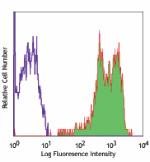
Human peripheral blood lymphocytes stained with HI111 APC -
Biotin anti-human CD11a

Human peripheral blood lymphocytes stained with biotinylated... -
FITC anti-human CD11a
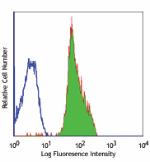
Human peripheral blood lymphocytes stained with HI111 FITC -
PE anti-human CD11a

Human peripheral blood lymphocytes stained with HI111 PE -
PE/Cyanine5 anti-human CD11a

Human peripheral blood lymphocytes stained with HI111 PE/Cya... -
Purified anti-human CD11a
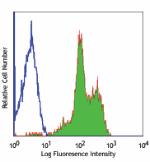
Human peripheral blood lymphocytes stained with purified HI1... -
Alexa Fluor® 488 anti-human CD11a
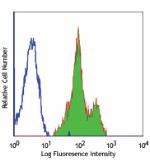
Human peripheral blood lymphocytes stained with HI111 Alexa ... -
Alexa Fluor® 647 anti-human CD11a
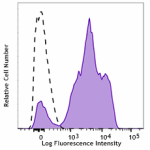
Human peripheral blood lymphocytes were stained with HI111 A... -
PE/Cyanine7 anti-human CD11a
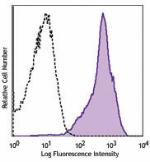
Human peripheral blood lymphocytes were stained CD11a (clone... -
Alexa Fluor® 594 anti-human CD11a
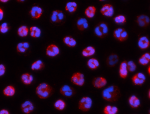
Human neutrophils were fixed with 1% paraformaldehyde (PFA),... 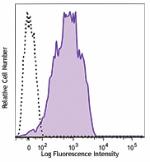
Human peripheral blood lymphocytes were stained with CD11a (... -
Purified anti-human CD11a (Maxpar® Ready)
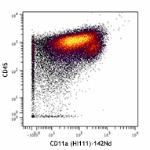
Human PBMCs stained with 154Sm-anti-CD45 (HI30) and 142Nd-an... -
APC/Fire™ 750 anti-human CD11a
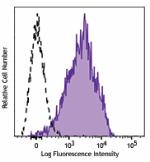
Human peripheral blood lymphocytes were stained CD11a (clone... -
Alexa Fluor® 700 anti-human CD11a
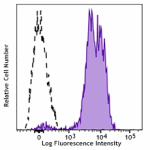
Human peripheral blood lymphocytes were stained with CD11a (... -
PerCP/Cyanine5.5 anti-human CD11a
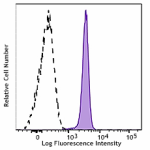
Human peripheral blood lymphocytes were stained CD11a (clone... -
PE/Dazzle™ 594 anti-human CD11a
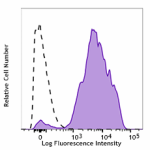
Human peripheral blood lymphocytes were stained with HI111 P... -
Ultra-LEAF™ Purified anti-human CD11a
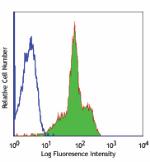
Human peripheral blood lymphocytes stained with Ultra-LEAF™ ... -
APC/Cyanine7 anti-human CD11a
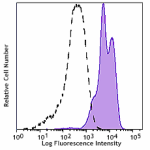
Human peripheral blood lymphocytes were stained with CD11a (... -
Brilliant Violet 711™ anti-human CD11a
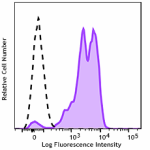
Human peripheral blood lymphocytes stained with anti-human C... -
Brilliant Violet 650™ anti-human CD11a

Human peripheral blood lymphocytes were stained with anti-hu... -
Spark Red™ 718 anti-human CD11a (Flexi-Fluor™)
-
Brilliant Violet 510™ anti-human CD11a

Human lysed whole blood was stained with anti-human CD11a (c...
 Login / Register
Login / Register 






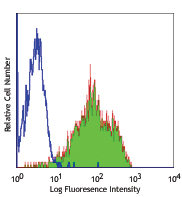
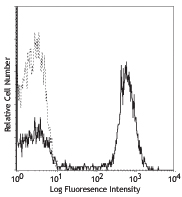

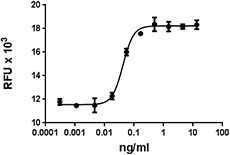



Follow Us